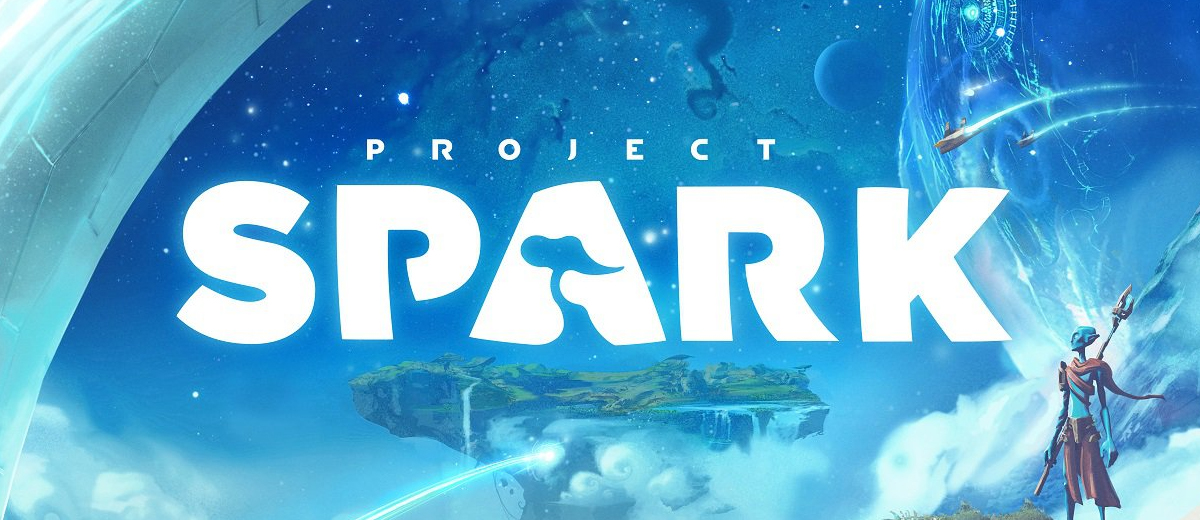
 Project Spark is hard game to properly define. On one hand it’s a pretty typical action adventure game. But on the other, it’s a game maker. A digital canvas with which players can create almost anything and everything. Throughout my time with Project Spark, I’ve seen it be used to create platforming games, music and rhythm games, aerial combat simulators and even re-enact classic franchises like Zelda or even music videos from established artists.
Project Spark is hard game to properly define. On one hand it’s a pretty typical action adventure game. But on the other, it’s a game maker. A digital canvas with which players can create almost anything and everything. Throughout my time with Project Spark, I’ve seen it be used to create platforming games, music and rhythm games, aerial combat simulators and even re-enact classic franchises like Zelda or even music videos from established artists.
 I guess the point I’m trying to make here is that the crux of Project Spark is the creative tools it provides players. While it includes a rudimentary campaign, it’s merely designed as light tutorials to accustom the player to the components that Project Spark gives the player. In short – it’s only as good as the things you create, and your own capacity to create. So your mileage will most certainly vary.
I guess the point I’m trying to make here is that the crux of Project Spark is the creative tools it provides players. While it includes a rudimentary campaign, it’s merely designed as light tutorials to accustom the player to the components that Project Spark gives the player. In short – it’s only as good as the things you create, and your own capacity to create. So your mileage will most certainly vary.

Project Spark employs a colourful and vibrant art style that isn’t really pushing the system beyond anything you’d see on Xbox 360 but adheres to a uniform art style instead. Character models and environments all have a unique looking, almost Claymation style that gives Project Spark an instantly recognisable look no matter what the setting is. From space to the medieval, everything looks different but at the same time like it belongs to the same family and this is quite an accomplishment.
 Unfortunately that’s just about where the praises end for the game’s presentation, as for the most part Project Spark is pretty poorly optimised, at least for the Xbox One. The tools don’t really feature a “limit” of sorts and while that sounds like a great thing for content creators it means that there’s several times where a creation will bring the action to a crawling frame rate.
Unfortunately that’s just about where the praises end for the game’s presentation, as for the most part Project Spark is pretty poorly optimised, at least for the Xbox One. The tools don’t really feature a “limit” of sorts and while that sounds like a great thing for content creators it means that there’s several times where a creation will bring the action to a crawling frame rate.
The sound design is pretty nice, however, and fits in with that airy and whimsical, Disney-esque aesthetic that Team Dakota were clearly going for. Sure, it’s not as witty or as charming as Stephen Fry from LittleBigPlanet but it definitely does the job.

Project Spark splits its experience into three core tenets. The first is Play, where as you’d expect, players can play a variety of games. The game includes a campaign which runs you through the absolute basics of programming logic (and by extension, Project Spark’s underlying coding system) while also providing a nice primer on how the game’s combat works. It’s very simple, and at most times plays like a low rent Fable, but it still provides a nice foundation from which to create more scenarios – the irony of which being that many of these creations are more interesting than the campaign.
But between the game’s very comprehensive tutorials and its rudimental campaign – Project Spark does one thing pretty well that many other titles like RPG Maker or even LittleBigPlanet fails to do. Team Dakota have managed to create an in-depth and complex game maker but at the same time managed to remove a lot of the tedium and confusion surrounding how to put everything to good use. The tools are in-depth enough to create your own artificial intelligence (affectionately called “brains”) whereas those who are put off by programming logic can easily just choose from a set batch of resources too.
 The Starter Pack, despite my own personal issues with its visual style, features a large variety of themes that’ll get most players in to create all kinds of stages. It’s really fascinating to see how many different things are possible with Project Spark and even more importantly how creative the greater community seems to be. You can create a twin stick shooter, you can create a first person adventure – you can even take a classic game like Gradius and make it all about zombies. The sky really is the limit. You can even use Kinect to capture animations for characters too, often to hilarious and unintended results.
The Starter Pack, despite my own personal issues with its visual style, features a large variety of themes that’ll get most players in to create all kinds of stages. It’s really fascinating to see how many different things are possible with Project Spark and even more importantly how creative the greater community seems to be. You can create a twin stick shooter, you can create a first person adventure – you can even take a classic game like Gradius and make it all about zombies. The sky really is the limit. You can even use Kinect to capture animations for characters too, often to hilarious and unintended results.
For people like me who aren’t creative in the same way that Project Spark encourages, it’s also great to see that it’s possible to take any map already created and remix it and add your own touches. It probably errs on the side of plagiarism too, but Project Spark does a good job at giving credit where credit is due. The “lineage” feature tracks remixes of a level back to its original creator which is a feature that seems simple but one I really appreciate. As you’d expect, there’s all kinds of typical community features like user ratings and whatnot too.
 But there lies one major problem with Project Spark that keeps it from being truly great, and that’s the way the content is provided to the player. The Starter Pack includes a wide breadth of content but a lot of the cooler stuff (including the aforementioned Zombie content pack) will set you back credits. Credits can be earned through normal gameplay but it is such a grind that it’s presumably going to be frustrated and impatient people shelling out real money for them rather than earning them naturally. To be fair, the game seems to favour creators more than players with the doling out of these credits (and rightly so, they do make or break Project Spark) but it still feels like an unnecessary and arduous grind to unlock everything and create everything.
But there lies one major problem with Project Spark that keeps it from being truly great, and that’s the way the content is provided to the player. The Starter Pack includes a wide breadth of content but a lot of the cooler stuff (including the aforementioned Zombie content pack) will set you back credits. Credits can be earned through normal gameplay but it is such a grind that it’s presumably going to be frustrated and impatient people shelling out real money for them rather than earning them naturally. To be fair, the game seems to favour creators more than players with the doling out of these credits (and rightly so, they do make or break Project Spark) but it still feels like an unnecessary and arduous grind to unlock everything and create everything.



